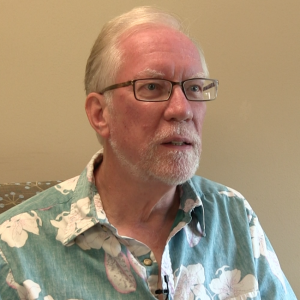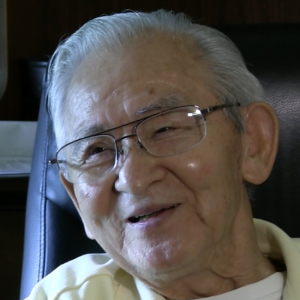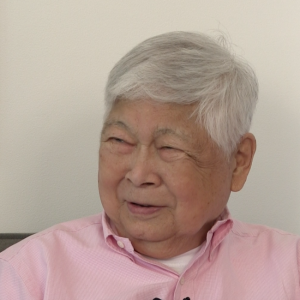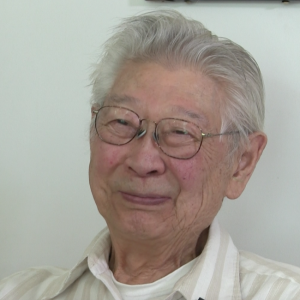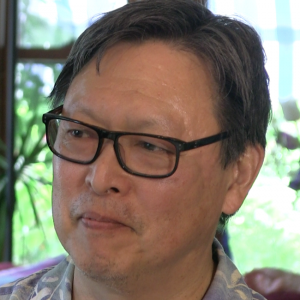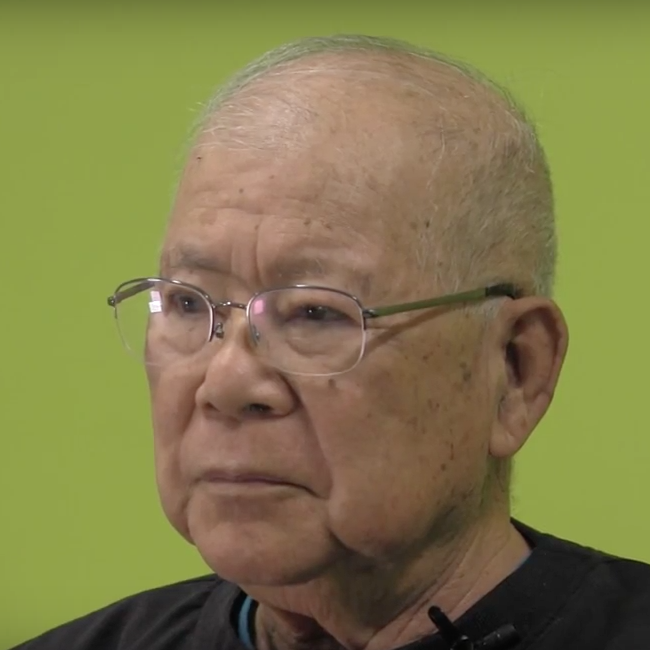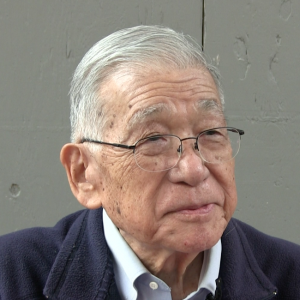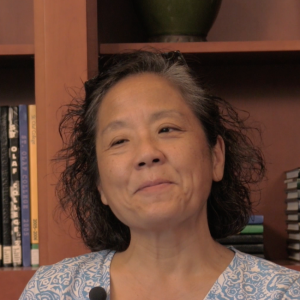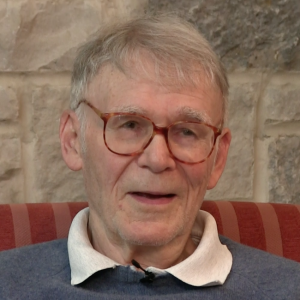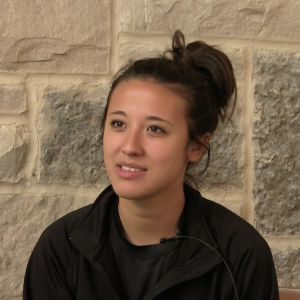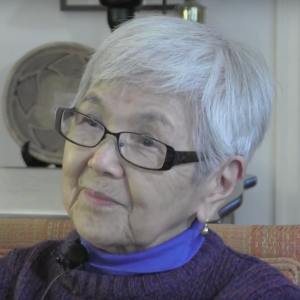Storytellers
 Beyond the Barbed Wire: Japanese Americans in Minnesota is an ongoing digital project that aims to document the unique stories of the Japanese Americans in Minnesota, as they left the internment camps and settled in the Midwest after World War II. In the summer and fall of 2015, the research team had the honor to interview individuals who personally lived through the war and relocation, along with their families, historians, and scholars. Their knowledge, recollections, and wisdom greatly enhanced our understanding of not only this dark chapter in the twentieth-century American history, but also the challenge of being ethnic minority in the American heartland. We sincerely appreciate their time, generosity, and support, without which, this project would not have been possible, and we hope to do their stories justice.
Beyond the Barbed Wire: Japanese Americans in Minnesota is an ongoing digital project that aims to document the unique stories of the Japanese Americans in Minnesota, as they left the internment camps and settled in the Midwest after World War II. In the summer and fall of 2015, the research team had the honor to interview individuals who personally lived through the war and relocation, along with their families, historians, and scholars. Their knowledge, recollections, and wisdom greatly enhanced our understanding of not only this dark chapter in the twentieth-century American history, but also the challenge of being ethnic minority in the American heartland. We sincerely appreciate their time, generosity, and support, without which, this project would not have been possible, and we hope to do their stories justice.
Bill Doi
Raised by a single father with three other siblings, S. Bill Doi went to the Tule Lake Internment Camp in his 20s. After seven months, he volunteered for military service and was sent to the Japanese Language School set up by the Military Intelligence Service (MIS) at Camp Savage. After a couple months of training, he was reassigned to Special Services, which planned recreational activities for the soldiers in the schools. He married his late wife Peggie, whom he met at the Tule camp in 1943 and started his family of five children in Minnesota. After the war, he became an active member of the JACL, both locally and nationally, as well as served on the Redress Committee. He was also a founder of the Minnesota Nikkei project. In addition, he contributed to different Twin Cities organizations and received many awards for his achievements. Bill passed away on May 16, 2018 at the age of 101.
Peggy Doi
The oldest of Bill Doi’s five children, Peggy was born and grew up in Minneapolis. She received a degree in Medical technology from the University of Minnesota and worked in pharmaceutical research at various places from the East Coast to Hawai’i before moving back to the Twin Cities to retire and look after her father. Currently, she is a consultant and also makes handbags and other articles sold at a non-profit shop for the Roseville AREA Senior Programs, where she is a member of the Advisory Council. She has also been an active member of the Minnesota Nikkei Project, an organization spearheaded by her father to provide activities and camaraderie with other Issei (First generation Japanese born in Japan) as they aged. She has two children and four grandchildren.
Robert Entenmann
Robert Entenmann, Professor of History and Asian Studies at St Olaf College, teaches history and interdisciplinary courses on Japan, China, and Southeast Asia. His research focuses on the social history of Chinese Catholics in the eighteenth century. His many notable services and distinctions include the board of directors of the Association for Asian Studies, Benedict Distinguished Visiting Professor at Carleton College (2002-2003), and the president of the Midwest Conference on Asian Affairs (2008-2009). Prof. Entenmann’s illustrious career has led him to many interactions with the Japanese American communities, including Gordon Hirabayashi, who is best known for his resistance to the internment with a court case that bears his name. Prof. Entenmann has retired from teaching in 2018 and currently resides in Northfield, MN.
Bill Hirabayashi
Bill was a carefree farm boy in Washington before the war. Everything changed as the evacuation order forced his family to Pinedale Assembly Center and then to Tule Lake. Bill grew up with his cousin Gordon Hirabayashi, who fought against the internment in the Supreme Court case Hirabayashi vs. United States (1943). His brother Grant had served in the army unit most famously known as Merrill’s Marauders. Bill married his wife Anice at Tule Lake, and young couple was then able to leave the camp because Bill had found a sponsor with a job offer near Chicago, where he worked at Grassmere farms. After the passing of the owner, Bill moved to Minnesota with family, first worked as an auto mechanic, and later started his own car dealership business. Bill and his wife were active in the Festival of Nations, Minnesota Nikkei Project, and other community activities. Bill passed away on August 6, 2017 at the age of 93.
Mikio “Micky” Kirihara
Born and raised in Oakland, California, Mikio “Micky” Kirihara was interned at the age of 13 with the rest of his family first at the Tanforan assembly center and later at the Topaz internment center. After the war, he moved with his family to the Twin Cities, where he finished high school and attended college. It was during this time that he met his future wife, Lucy. After Micky graduated from University of Minnesota with an architecture degree and secured a job as a draftsman, the couple tried to settle in Bloomington, Minnesota. This proved to be difficult due to the housing discrimination faced by Japanese Americans after World War II. Eventually, they found the house where they would raise their three children. He was also a Korean War veteran. In his days of retirement he enjoyed playing with their dog and sailing miniature sailboats. Micky passed away peacefully at his home on November 30, 2017.
Lucy Kirihara
Lucy Kirihara (Torii) was born and grew up in Portland, Oregon. Once Executive Order 9066 was issued, she and her family were taken away to Minidoka, Idaho, where they spent the rest of the war. After the war, Lucy’s family had nowhere to go except the Twin Cities, where Lucy’s two older sisters – Esther and Eunice – were attending Macalester College. Lucy went to the University of Minnesota and studied to become a teacher. In 1955, she married Mikio “Micky” Kirihara, and the young couple started their family in the cities. They have three children. Lucy has been a life-long educator and is active on the Twin Cities JACL chapter’s education board and remains an advocate for human rights and equality, including education on the Japanese-American internment.
Jim Kirihara
Being the son of a grocer, Jim Kirihara grew up in Oakland, California. As the war broke out, his family first went to the Tanforan Assembly Center and then Topaz Relocation Center, where the Kirharas spent the first part of the war. With the help from a camp administrator, Jim was one of the few Japanese American Niseis who was allowed to get out of the internment camp through a sponsor. As a result, he was able to attend Dunwoody College in Minneapolis. He was later joined by his family, including his younger brother Mikio. After graduated from Dunwoody, Jim went into accountancy and thrived in this profession throughout his career in Minnesota. Jim was also a long time Mason and Shriner and the friendships he shared were a very important part of his life. He passed away on June 19, 2018 at the age of 93.
Jim Kusunoki
Born and raised in San Francisco, Kiyoshi “Jim” Kusunoki was a World War II veteran who served in Germany during and after the war. The Kusunokis ran a successful tailoring business in California, but like many other Japanese American families, they were forced to leave everything behind and sent to the Topaz internment camp in Utah. Jim was drafted while he was still in the camp and became the only Japanese American in his unit. After his service in the US Army, he reunited with his family, who had relocated to Chicago. He met his wife Pearl Fujimoto there and were married in 1949. In 1955, the young couple and their two sons Stanley and Brian moved to the Twin Cities, and Jim continued his career as a color matcher in the paint and printing business. He was also committed to community service as a member of the Japanese Americans Citizens League and Mayflower UCC in South Minneapolis. Jim passed away on June 12, 2019.
Stanley Kusunoki
The eldest of Jim Kusunoki’s two sons, Stanley is a “sansei” Japanese American, born in Chicago and grew up in Minneapolis. He is an educator, poet, writer, and artist. He had studied at the University of Minnesota, Duluth, and the University of St. Thomas, and was well known as a dedicated teacher and a talented poet, who has become the voice to his mother’s unspeakable internment experience. Stanley is the author of 180 Days: Reflections and Observations of a Teacher. He was also the recipient of a Loft Asian Inroads mentorship as well as a Minnesota State Arts Board “Cultural Collaborations” Grant. He is now retired after teaching at Red Oak Elementary School in Shakopee. He and his wife, Claudia Hampston Daly, live in St Paul.
Edwin M. Nakasone
Born in 1927 on the island of Maui (Hawaii), Edwin was a mere 14 years old when he witnessed the Japanese attack on Pearl Harbor. As soon as he was old enough, he enlisted and was sent to Fort Snelling to train as an interpreter. Shortly after, however, the war ended, and he finished his training in California. Ed served during the occupation of Japan and returned home to attend college at the University of Minnesota starting in 1950. He was a retired U.S. Government Public Works Center welder at Pearl Harbor. He also taught first at White Bear Lake High School, and then at Century College. Over the course of his life, he has written numerous books, articles, and films, along with winning two Fulbright grants. He is currently retired, though still an active speaker on Japanese-American military history. He passed away in March 16, 2022.
Yoshio “Matt” Matsumoto
Yoshio “Matt” Matsumoto was born in 1921 in San Diego. He was studying engineering at Berkeley when the war broke out and was subsequently sent to the internment camp. His field of study and excellent academic performance eventually had a drastic impact on his life. After only three months in the Tanforan Assembly Center, Matt received a letter from the National Japanese American Student Relocation Council (NJASRC ) stating that he had been accepted at Washington University in St. Louis, Missouri. Matt was drafted shortly after graduation. He was trained at Fort Blanding in Florida alongside with other Japanese American recruits (who were mostly sent to Europe as replacements for the 442nd regiment), but was then underwent officer training. Accordingly, Matt was still stateside when the war ended. He spent the rest of his military tenure overseeing reconstruction in Germany. After his service, He moved back to Michigan and later to St. Paul to work for the 3M Company. He resided in St. Paul after he retired. Matt passed away on June 3, 2021 after a remarkable life at the age of 99.
Jane Murakami
Jane is the daughter of Yoshiteru “Yosh” Murakami, a St. Olaf College alumni and a beloved music teacher of the Northfield community. She considers herself a “retownie” as she has moved several times, but continues to find herself back in Northfield, the place where she was born. The Murakami family moved to the Moorhead/Fargo area while Jane was in middle school. However, she followed in her father’s footsteps and returned to attend St. Olaf. She left town once more after graduation and pursued her career in social services, working with people with disabilities. She resettled in Northfield in 2013. Jane passed away peacefully on July 13, 2020 at the age of 63.
Bardwell Smith
Bardwell Smith, Emeritus Professor at Carleton College, is one of the foremost experts on John W. Nason, the first chairman of the NJASRC (National Japanese American Student Relocation Council). Prof. Smith served as the dean of Carleton College (1967-72) while Nason was president, and thus came to know him well. Over the years, Prof. Smith has done extensive research on Nason’s life and work, including his efforts to relocate Japanese American students during World War II. Prof. Smith later became John W. Nason Professor of Religion and Asian Studies at Carleton and was a vital player in building the Asian Studies program. Prof. Smith has been interested in Asia ever since serving in the Marines in the Pacific during World War II. He continues to stay in Northfield after his retirement in 1995. Prof. Smith passed away on November 28, 2022, at the age of 97.
Sally Sudo
Born Shigeyo Ohno, Sally was forcibly evacuated along with her family at the age of 6 to the Puyallup Assembly Center from her home in Seattle. They were then relocated to the Minidoka Internment Camp in Idaho. After the camp closed, one of her older brothers, Joe, who had served in the Military Intelligence Service at Fort Snelling, helped to bring the entire family to Minnesota. Sally later attended the University of Minnesota, where she met her husband Sudo, an exchange student from Japan. They have three children and lived in Japan for 17 years due to her husband’s work. Since her return to Minnesota in 1984, Sally has been one of the leading members of the Twin Cities Japanese American Citizens League and served as the Chair of the education committee that grants scholarships to minority students.
Yoshiko Tani
Yoshiko Tani, or Yoshi, was born in 1921 to Issei parents in Seattle, where she grew up. She was studying Dietetics at the University of Washington in Seattle when Pearl Harbor was bombed and Executive Order 9066 was subsequently signed. She and her family were incarcerated in the Minidoka Relocation Center, where she met her future husband, George Tani. In July of 1943 she went from Minidoka to Chicago to Milwaukee, and eventually moved to St. Paul and married George, who was then at Fort Snelling. They settled down in the area to start a family, which would eventually include her daughter Kay Tani and granddaughter Emily Tani-Winegarden. Tani passed away peacefully on December 3, 2022 at the age of 101.
Emily Tani-Winegarden
Emily Tani-Winegarden is a graduate of St. Olaf College. Her Nisei grandparents George and Yoshi Tani met and became engaged in the Minidoka internment camp. Through the War Relocation Authority the young couple resettled to Chicago and subsequently moved to Minnesota, where Emily’s mother was born. As a studio art major, Emily is interested in the topic of Japanese internment and incorporates it into her work. Although she considers the internment a horrible part of American history, she also believes in the importance of educating people about the internment camps, especially in Minnesota, where so few people know about it.
Albert Yamamoto
Born and raised in Seattle, Al was in the unique situation where he was trapped in Japan during World War II. When he was 13 years old, in the November of 1940, his father took him and his sister to Japan, leaving them behind with their grandfather, and that was where Al stayed until the end of the war. During this time, he was forced to endure attacks by American fighter planes and attempt to adjust to Japanese school life. After the war ended and U.S. occupation of Japan began, Al helped interpret for the U.S. Army in Tokyo and was able to go back to the U.S. to reunite with his family in 1947 after reinstatement of his U.S. citizenship. His family then relocated to Chicago where he attended the University of Chicago and the University of Illinois for economics until being drafted into the army in 1953. He moved to Minnesota in 2006 to be closer to his children. Al passed away on February 27, 2019, at the age of 91.
Hannah Semba
An inhabitant of Bainbridge Island before the forced evacuation, Hannah Semba was incarcerated with her family at Tule Lake when she was 16. After two years in the camp, she applied and was accepted at Macalester College in St. Paul, Minnesota. However, after the war ended and she was allowed to transfer to the University of Minnesota: a school that she wasn’t allowed to go to during the war on account of her Japanese ancestry. Her family joined her and her sister in the Twin Cities once they were released from the camps. She has lived in the area ever since. Hannah is also the sister of the Mary Hayano, one of the eleven Nisei who attended St. Olaf College during the war. Mary is the only known Nisei Ole still living, and she currently lives on Bainbridge Island back in Washington.



